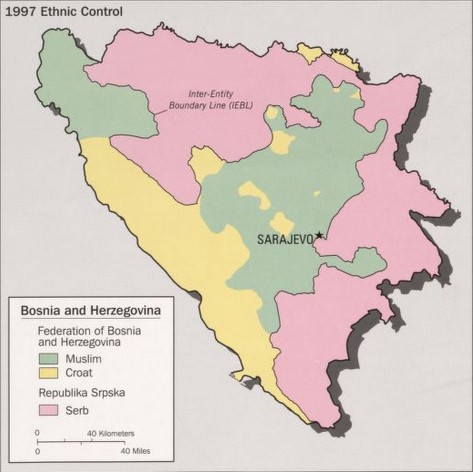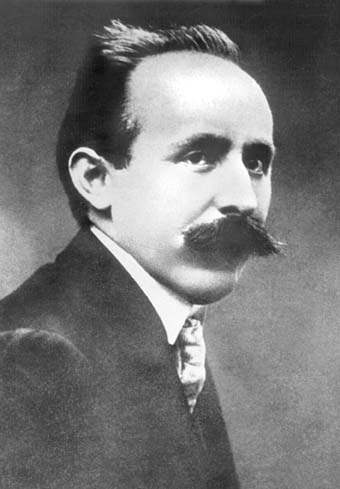|
Vareš
Vareš ( cyrl, Вареш) is a town and municipality located in Zenica-Doboj Canton of the Federation of Bosnia and Herzegovina, an entity of Bosnia and Herzegovina. It is situated in central Bosnia and Herzegovina, and is famous for the local mining activities and production of iron. As of 2013, it has a population of 8,892 inhabitants, with 2,917 in the town itself. Geography Vareš is a mountainous town located 45 km from Sarajevo in the valley of the small Stavnja River 828 m above sea level surrounded by the massive high Kapija, Stijene, Zvijezda and Perun Mountains, named after Perun / Перун, the highest god of the Slavic pantheon (Perkūnas/Perkons). History Early history The town of Vareš has a long history with remains of metallurgical activities dating back to Bronze Age. Also during the Roman Empire, Roman era, the town was famous for its miners and smiths. Middle ages During Middle Ages the List of Bosnian rulers, Bosnian kings had their center in close p ... [...More Info...] [...Related Items...] OR: [Wikipedia] [Google] [Baidu] |
Bosnian War
The Bosnian War ( / Рат у Босни и Херцеговини) was an international armed conflict that took place in Republic of Bosnia and Herzegovina, Bosnia and Herzegovina between 1992 and 1995. Following several earlier violent incidents, the war is commonly seen as having started on 6 April 1992 when the newly independent Republic of Bosnia and Herzegovina was internationally recognized. It ended on 21 November 1995 when the Dayton accords, Dayton Accords were initialed. The main belligerents were the forces of the government of the Republic of Bosnia and Herzegovina, and those of the breakaway proto-states of the Croatian Republic of Herzeg-Bosnia, Republic of Herzeg-Bosnia and the Republika Srpska (1992–1995), Republika Srpska which were led and supplied by Croatia and Republic of Serbia (1992–2006), Serbia, respectively. The war was part of the breakup of Yugoslavia. Following the Slovenian and Croatian secessions from the Socialist Federal Republic of Yugosla ... [...More Info...] [...Related Items...] OR: [Wikipedia] [Google] [Baidu] |
Croatian Democratic Alliance Of Bosnia And Herzegovina
The Croatian Democratic Alliance (, HDS) is a minor Croat political party in Bosnia and Herzegovina. History HDS was founded on 11 February 2024 by Ivo Tadić, member of the Assembly of the Zenica-Doboj Canton and the House of Peoples of the Federation of Bosnia and Herzegovina, and former member of the Croatian Democratic Union of Bosnia and Herzegovina (HDZ BiH). HDS was founded and is the only political party headquartered in Žepče. HDS was formed as opposition to HDZ BiH cooperating with other Bosnian Croat opposition parties like HDZ 1990, HNP, HRS and HSS BiH. HDS is mostly focused on Žepče and the Zenica-Doboj Canton. The party participated in the 2024 municipal elections in Žepče, Vareš and Maglaj Maglaj (Маглај) is a town and municipality located in the Zenica-Doboj Canton of the Federation of Bosnia and Herzegovina, an entity of Bosnia and Herzegovina. It is located in northern Bosnia and Herzegovina, south of Doboj. It has a popu .... Referen ... [...More Info...] [...Related Items...] OR: [Wikipedia] [Google] [Baidu] |
Bobovac
Bobovac ( sh-Cyrl, Бобовац) a historic site, was a fortified royal capital city of medieval Bosnia and Herzegovina, and as such a seat of Bosnian rulers during 14th and 15th century. It is located near today's Vareš and the village of Borovica, and close to the Royal court in Sutjeska, in present-day village of Kraljeva Sutjeska. It is a protected national heritage site as a National monument of Bosnia and Herzegovina by KONS. History The city was built during the reign of Stephen II, Ban of Bosnia, and was first mentioned in a document dating from 1349. It shared the role of seat of the rulers of Bosnia with the court in Sutjeska, or as it called today, Kraljeva Sutjeska, however Bobovac was much better fortified than the other. Bosnian King Stephen Tomašević moved the royal seat to Jajce during his war with the Ottoman Empire. The Ottomans invaded the city in 1463. Its fall hastened the Ottoman conquest of Bosnia. Main structures and architectural style Within ... [...More Info...] [...Related Items...] OR: [Wikipedia] [Google] [Baidu] |
Federation Of Bosnia And Herzegovina
The Federation of Bosnia and Herzegovina (Serbo-Croatian: ''Federacija Bosne i Hercegovine'' / ''Федерација Босне и Херцеговине'') is one of the two Political divisions of Bosnia and Herzegovina, entities composing Bosnia and Herzegovina, the other being Republika Srpska. The Federation of Bosnia and Herzegovina consists of ten autonomous Cantons of the Federation of Bosnia and Herzegovina, cantons with their own governments and legislatures. The Federation was created by the 1994 Washington Agreement (1994), Washington Agreement, which ended the Croat–Bosniak War within the Bosnian War, and established a constituent assembly that continued its work until October 1996. The Federation has a Sarajevo, capital, Government of the Federation of Bosnia and Herzegovina, government, president, parliament, customs and police departments and two postal systems. It occupies about half of the land of Bosnia and Herzegovina. From 1996 until 2005 it had its own a ... [...More Info...] [...Related Items...] OR: [Wikipedia] [Google] [Baidu] |
Independent State Of Croatia
The Independent State of Croatia (, NDH) was a World War II–era puppet state of Nazi Germany and Fascist Italy (1922–1943), Fascist Italy. It was established in parts of Axis occupation of Yugoslavia, occupied Yugoslavia on 10 April 1941, after invasion of Yugoslavia, the invasion by the Axis powers. Its territory consisted mostly of modern-day Croatia and Bosnia and Herzegovina, as well as some parts of modern-day Serbia and Slovenia, but also excluded many Croats, Croat-populated areas in Dalmatia (until late 1943), Istria, and Međimurje (region), Međimurje regions (which today are part of Croatia). During its entire existence, the NDH was governed as a one-party state by the Fascism, fascist Ustaše organization. The Ustaše was led by the ''Poglavnik'' Ante Pavelić."''Poglavnik''" was coined by the Ustaše and originally a title for the movement's leader. In 1941 it was institutionalized in the NDH as the title of first the Prime Minister (1941–1943), and then the ... [...More Info...] [...Related Items...] OR: [Wikipedia] [Google] [Baidu] |
Bosnia And Herzegovina
Bosnia and Herzegovina, sometimes known as Bosnia-Herzegovina and informally as Bosnia, is a country in Southeast Europe. Situated on the Balkans, Balkan Peninsula, it borders Serbia to the east, Montenegro to the southeast, and Croatia to the north and southwest, with a coast on the Adriatic Sea in the south. Bosnia (region), Bosnia has a moderate continental climate with hot summers and cold, snowy winters. Its geography is largely mountainous, particularly in the central and eastern regions, which are dominated by the Dinaric Alps. Herzegovina, the smaller, southern region, has a Mediterranean climate and is mostly mountainous. Sarajevo is the capital and the largest city. The area has been inhabited since at least the Upper Paleolithic, with permanent human settlement traced to the Neolithic cultures of Butmir culture, Butmir, Kakanj culture, Kakanj, and Vučedol culture, Vučedol. After the arrival of the first Proto-Indo-Europeans, Indo-Europeans, the area was populated ... [...More Info...] [...Related Items...] OR: [Wikipedia] [Google] [Baidu] |
Perun
In Slavic paganism, Slavic mythology, Perun () is the highest god of the Pantheon (religion), pantheon and the god of sky, thunder, lightning, storms, rain, law, war, fertility and oak trees. His other attributes were fire, mountains, wind, iris (plant), iris, eagle, firmament (in Indo-European languages, this was joined with the notion of the ''sky of stone''), horses and carts, and weapons (hammer, axe (Axe of Perun), and arrow). The supreme god in the Kievan Rus' during the 9th-10th centuries, Perun was first associated with weapons made of Rock (geology), stone and later with those of metal. Sources Of all historic records describing Slavic gods, those mentioning Perun are the most numerous. As early as the 6th century, he was mentioned in ''De Bello Gothico'', a historical source written by the Byzantine Empire, Eastern Roman historian Procopius. A short note describing beliefs of a certain South Slavic tribe states they ''acknowledge that one god, creator of lightning, ... [...More Info...] [...Related Items...] OR: [Wikipedia] [Google] [Baidu] |
Austrian Rule Of Bosnia And Herzegovina
Bosnia and Herzegovina fell under Austro-Hungarian rule in 1878, when the Congress of Berlin approved the occupation of the Bosnia Vilayet, which officially remained part of the Ottoman Empire. Three decades later, in 1908, Austria-Hungary provoked the Bosnian Crisis by formally annexing the occupied zone, establishing the Condominium of Bosnia and Herzegovina under the joint control of Austria and Hungary. History Occupation Following the Russo-Turkish War (1877–1878), in June and July 1878 the Congress of Berlin was organized by the Great Powers. The resulting Treaty of Berlin caused Bosnia and Herzegovina to nominally remain under sovereignty of the Ottoman Empire, but was de facto ceded to Austria-Hungary, which also obtained the right to garrison the Sanjak of Novi Pazar. According to article 25: The provinces of Bosnia and Herzegovina shall be occupied and administered by Austria-Hungary. The government of Austria-Hungary, not desiring to undertake the administrat ... [...More Info...] [...Related Items...] OR: [Wikipedia] [Google] [Baidu] |
Municipalities Of Bosnia And Herzegovina
In Bosnia and Herzegovina, the smallest administrative unit is the municipality ("''opština''/општина" or "''općina''/опћина" in the official languages and scripts of the country). Prior to the 1992–95 Bosnian War there were 109 municipalities in what was then Socialist Republic of Bosnia and Herzegovina. Ten of these formed the area of the capital Sarajevo. After the war, the number of municipalities was increased to 143, grouped in the following way: *79 municipalities constitute the Federation of Bosnia and Herzegovina (FBiH), which comprises 51% of the country's total territory. The municipalities within the federation are grouped into ten cantons. *64 municipalities constitute the Republika Srpska (RS), which comprises 49% of the country's total territory. In addition, Brčko District does not belong to either entity and is governed as a condominium of both FBiH and RS entities. The district corresponds to the pre-war Brčko municipality. Although tec ... [...More Info...] [...Related Items...] OR: [Wikipedia] [Google] [Baidu] |
Zenica-Doboj Canton
The Zenica-Doboj Canton (; ; ) is one of ten cantons in Bosnia and Herzegovina. It is part of the entity of Federation of Bosnia and Herzegovina. The seat and largest city is Zenica. Spread over an area of , the canton roughly occupies the central areas of the country. With a population of over 0.35 million inhabitants in 2013, it is the third most populous canton in the entity. History Archeological evidence point to human habitation since the Neolithic period. The region was under the rule of the Illyrians, Romans, and Ottomans at various times during the history. During the later Middle Ages, the city of Zenica served as the administrative center of the region. Its location on the banks of the Bosna River made it an important economic center during the Ottoman rule. In the late 19th century, it came under Austro-Hungarian rule, when rapid industrialization took place with the establishment of iron and steel factories, coal mines, and textile mills. This urbanization result ... [...More Info...] [...Related Items...] OR: [Wikipedia] [Google] [Baidu] |
Yugoslav Partisans
The Yugoslav Partisans,Serbo-Croatian, Macedonian language, Macedonian, and Slovene language, Slovene: , officially the National Liberation Army and Partisan Detachments of Yugoslavia sh-Latn-Cyrl, Narodnooslobodilačka vojska i partizanski odredi Jugoslavije (NOV i POJ), Народноослободилачка војска и партизански одреди Југославије (НОВ и ПОЈ); ; (often shortened as the National Liberation Army sh-Latn-Cyrl, Narodnooslobodilačka vojska (NOV), Народноослободилачка војска (НОВ); ; ) was the Communist Party of Yugoslavia, communist-led Anti-fascism, anti-fascist resistance to the Axis powers (chiefly Nazi Germany) in occupied Yugoslavia during World War II. Led by Josip Broz Tito, the Partisans are considered to be Europe's most effective anti-Axis powers, Axis Resistance during World War II, resistance movement during World War II. Primarily a Guerrilla warfare, guerrilla force at its ince ... [...More Info...] [...Related Items...] OR: [Wikipedia] [Google] [Baidu] |





